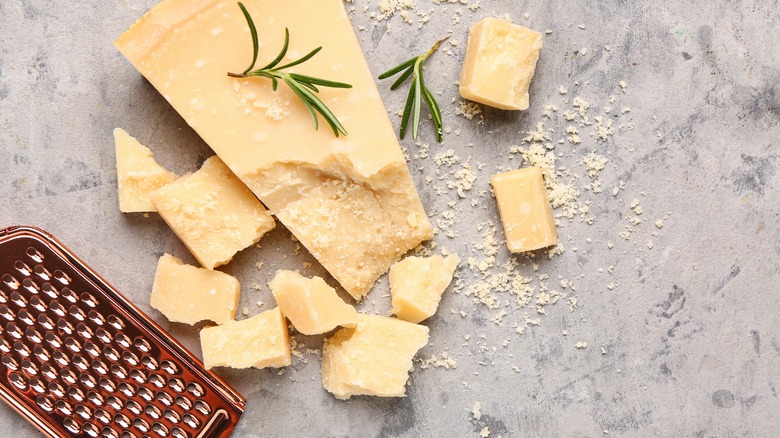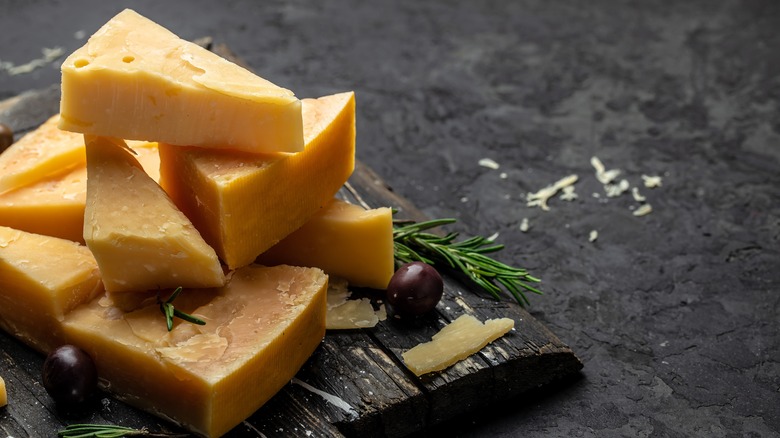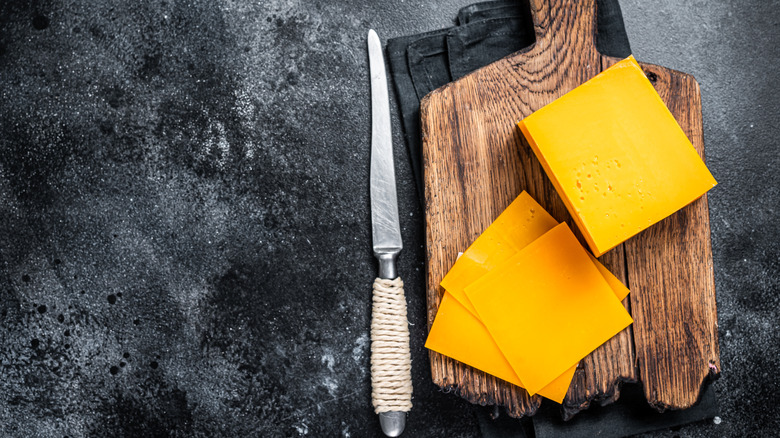No, Those White Spots On Your Block Of Parmesan Cheese Probably Aren't Mold
Parmesan is a staple in many households (including mine!), and that crumbly savory cheese can do a lot in the kitchen; including making an extraordinarily flavorful cheese broth that you can use for a date-night-ready mac and cheese. It's best when freshly grated, but when you pull that wedge out from the refrigerator, you might notice some white spots on the cheese's flat surface. For those of you who are particularly mold-averse, it's hard not to wonder if your cheese has gone bad — but the truth is, it probably hasn't. Those white spots are much more likely to be tyrosine or calcium lactate crystals, and it turns out, they're something not to avoid; but to cherish.
That's because the presence of these crystals (also simply referred to as 'cheese crystals') are a little nod to the fact that the cheese you're about to eat has likely been well-aged. If you take a chunk of Parmesan with those specks and eat it, you'll notice a distinct textural crunch to them, which many people find adds to their enjoyment of eating it. Those crystals aren't limited to just Parmesan either, as many hard aged cheeses can develop these crystals.
What are tyrosine crystals and how do they form?
In terms of Parmesan, it's most likely you're seeing tyrosine crystals in your cheese. These show up as proteins in the cheese during the cheese's long aging process. As the cheese matures, the amino acid tyrosine is released and it clusters together; turning into those white specks. You'll mostly find these in the interior of Swiss, Romano, and Parmesan cheeses, though you can occasionally find them in cheddar and gouda.
These crystals also have a telltale white color to them. And if you find a big enough one, you'll definitely be able to make out a crystalline structure to it. I always felt like they added a tiny bit of extra savoriness to cheeses, but it's mostly a texture thing as far as I've noticed. And if you wanted to link cheese to pleasure even further, tyrosine is a key component to dopamine; in case you wanted an excuse to sneak another chunk of Parmesan as you're cooking dinner.
What is calcium lactate and how do these crystals form?
Calcium lactate cheese crystals can also form as a natural part of a cheese's aging process. As cheese ages, bacteria breaks the lactose in the cheese down into lactic acid. That lactic acid combines with the calcium in the cheese and creates calcium lactate, thereby creating those little clusters of crystals. Calcium lactate crystals can be found on the exterior and interior of cheeses, like aged cheddar or occasionally gouda and Parmesan. These are the surface-level crystals that sometimes appear as mold to a lot of people, but again; are perfectly fine to eat. And because the lactose has been broken down quite a bit in these cheeses, only small amounts remain in the final product, meaning lactose intolerant people can enjoy some of these cheeses to an extent.
It's likely you've already eaten plenty of these crystals in your lifetime, provided you've previously enjoyed these types of hard aged cheeses. It's part of why I like including a few hard cheeses on a cheese plate, because texture is a big factor when considering what to put together. Plus, aged cheeses tend to pack a whole lot of umami flavor, which is part of why we all love cheese. Those crystals are just a good sign you picked one that's had plenty of time to mature, and in turn, will have lots of flavor to linger over.


